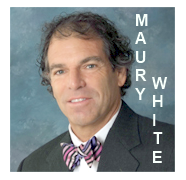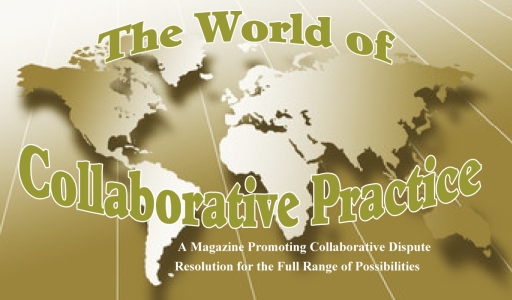
Tags
Related Posts
Share This
Collaborative Practice. Not part of the ‘adversarial system’.
The OCFLA[1] was originally conceived in 2007, by members of a Collaborative Law sub-committee of a Supreme Court Advisory Committee on Alternative Dispute Resolution for Children and Families. Five (5) years later, the 129th General Assembly passed the Ohio Collaborative Family Law Act (OCFLA), effective on March 22, 2013.[2] In so doing, the legislature provided Ohio families with a common sense approach to avoiding antagonistic and costly divorce litigation. The legislature saw fit to codify what is commonly known as Collaborative Practice[3] and added this contractually-based, voluntary method for solving family law issues, to Ohio’s existing portfolio of alternative dispute resolution processes. The OCFLA joined the previously enacted Uniform Arbitration Act[4] and the Uniform Mediation Act[5] as the three (3) alternatives to litigation for families facing end-of-marriage and child-related legal issues. Each of the four (4) methods (litigation, arbitration, mediation and now, collaboration) has distinct characteristics, and lawyers have a vital, yet varying, role in each process. The public, and the legal profession, are in need of clarity regarding these roles. This responsibility now falls to the Ohio Supreme Court.
At its core, the OCFLA is based upon three (3) foundations: (a) limited representation by the two attorneys hired by the husband and wife to serve as collaborative lawyers; (b) full and voluntary disclosure of all material information; and, (c) testimonial privilege for all participants in the event of impasse and termination of the process. ORC 3105.47 reiterates that the professional responsibility obligations and standards applicable to lawyers are not affected by the OCFLA.
The Preamble to the Ohio Rules of Professional Conduct explains that a lawyer can function as evaluator, negotiator, advisor and/or advocate.[6] The rules also set forth lawyers’ ethical responsibilities in regard to particular lawyer-client relationships. Lawyers are required to be sure clients are acting with informed consent[7], procedurally and substantively, and lawyers are generally required to respect limitations clients may request in regard to representation; i.e.: they can limit the scope of a lawyer’s representation.[8]
Under the heading of a lawyer’s role as counselor and advisor, the Comments go so far as to recognize that “advice couched in narrow legal terms may be of little value to a client and that a lawyer’s responsibility, as advisor, may include indicating that more may be involved than strictly legal considerations.”[9] Moreover, the Comments point out that “family matters can involve problems within the professional competence of psychiatry, clinical psychology, or social work; business matters can be with the competence of the accounting profession or of financial specialists.”[10]
Rule 2.4 goes so far as to specifically point out that “a lawyer may be hired as an arbitrator, a mediator or as a third-party neutral in a non-representational function.” The rules recognize that “alternative dispute resolution has become a substantial part of the civil justice system.”[11]
“As an evaluator, a lawyer examines a client’s legal affairs and reports about them to the client or to others.”[12] This is fully consistent with the collaborative lawyer’s function in Collaborative Practice; to help the client understand and evaluate the procedural and substantive consequences of proposed courses of action.
Collaborative Practice is fundamentally understood to be an interest-based negotiation (as opposed to positional bargaining). “As negotiator, a lawyer seeks a result advantageous to the client and consistent with requirements of honest dealings with others.”[13] The Collaborative Participation Agreement sets forth the clients’ intent to use their lawyers to find a way to meet as many interests as possible (for both clients) without sacrificing too many opposing interests.
When it comes to a lawyer’s advocacy function, however, the Ohio Rules of Professional Conduct seem to turn away from alternative dispute resolution. The Preamble says, “As, advocate, a lawyer asserts the client’s position under the rules of the adversary system.”[14] This is the rub for lawyers participating in a collaborative matter; the first lesson of collaborative practice is: Do not adopt positions. Collaborative lawyers may not appear before a court to represent a party in a proceeding related to the collaborative family matter[15]; the adversary system is not part of a collaborative process. Collaborative lawyers are not hired to use legal procedure for the fullest benefit of the client’s cause[16]; they are hired to help the clients find the two best solutions for their family. Collaborative lawyers are not hired to marshal evidence competitively by contending parties[17]; they are hired to make timely, full, candid and informal disclosure of information without formal discovery.[18]
The OCFLA is the evidence of just how substantial alternative dispute has become in our civil society. With the advent of ORC 3105.43, two (2) lawyers can be hired to assist two (2) people (a husband and a wife), in representational capacities, with or without the assistance of a third party neutral, and, at least during the collaborative process, as it pertains to the two lawyers, without an option for use of the adversary system. Most lawyers and most clients, nonetheless, remain confused about the role of advocacy.
The Ohio Rules of Professional Conduct are all about self-regulation of the legal profession and the profession’s special role in society.[19] In addition to providing for the possibilities of limited scope representation and the requirements of informed consent, the rules also require competency[20], diligence[21], reasonable communication[22] and respect for client confidentiality[23]. With the advent and evolution of alternative dispute resolution models, society’s expectations of the legal system, and of those charged with administering it, have also evolved. Our precepts for functioning in society must keep up with these movements (such as the OCFLA), or questions regarding competency and diligence and reasonableness will no doubt create unnecessary disappointments and misunderstandings for clients and lawyers alike. It is time for collaborative, mediation and arbitration to be acknowledged for what they have become: mainstream. A reframe of the Rules of Professional Conduct will enable participants to sit in the front of the bus if you will and it will help the public avoid the additional harm family law litigation often inadvertently inflicts.
[1] Ohio Revised Code 3105.41 to 3105.54
[2] In large measure adopting most provisions of Uniform Collaborative Law Act, NCCUSL, 2010.
[3] As defined by the International Academy of Collaborative Professionals, “Collaborative Practice is a voluntary dispute resolution process in which parties settle without resort to litigation. In Collaborative Practice: 1. The parties sign a Collaborative Participation Agreement describing the nature and scope of the matter; 2. The parties voluntarily disclose all information which is relevant and material to the matter that must be decided; 3. The parties agree to use good faith efforts in their negotiations to reach a mutually acceptable settlement; 4. Each party must be represented by a lawyer whose representation terminates upon the undertaking of any contested court proceeding; 5. The parties may engage mental health and financial professionals whose engagement terminates upon the undertaking of any contested court proceeding; and, 6. The parties may jointly engage other experts as needed.
[4] Ohio Revised Code 2711.01 to 2711.24
[5] Ohio Revised Code 2710.01 to 2710.10
[6] Ohio Rules of Professional Conduct, Preamble, paragraph (2)
[7] Ohio Rules of Professional Conduct, Rule 1.0(f), comment [6]
[8] Ohio Rules of Professional Conduct, Rule 1.2
[9] Ohio Rules of Professional Conduct, Rule 2.1, Comment [2]
[10] Ohio Rules of Professional Conduct, Rule 2.1, Comment [4]
[11] Ohio Rules of Professional Conduct, Rule 2.4, Comment [1]
[12] Ohio Rules of Professional Conduct, Preamble, paragraph (2)
[13] Ohio Rules of Professional Conduct, Preamble, paragraph (2)
[14] Ohio Rules of Professional Conduct, Preamble, paragraph (2)
[15] Ohio Revised Code 3105.45, and compare Ohio Rules of Professional Conduct, Rule 3.1
[16] Compare, Ohio Rules of Professional Conduct, Rule 3.1, Comment [1]
[17] Compare, Ohio Rules of Professional Conduct, Rule 3.4, Comment 1
[18] Ohio Revised Code 3105.46
[19] Ohio Rules of Professional Conduct, Preamble, paragraph (5) and (11)
[20] Ohio Rules of Professional Conduct, Rule 1.1
[21] Ohio Rules of Professional Conduct, Rule 1.3
[22] Ohio Rules of Professional Conduct, Rule 1.4
[23] Ohio Rules of Professional Conduct, Rule 1.6









Share your thoughts here and in your network.